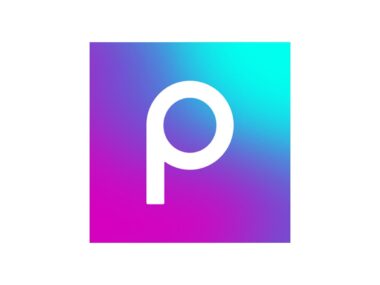Table of Contents
Key Features of GIMP Design Software
GIMP (GNU Image Manipulation Program) is a highly regarded, open-source image editing software, known for its versatility and wide range of features. First launched in 1996, GIMP continues to be actively developed, providing a robust free alternative to Adobe Photoshop.
Unique Features and Capabilities
- Customizable Interface: GIMP offers a highly customizable interface, allowing users to modify the view and behavior to suit their specific tasks. This includes changing widget themes, colors, spacings, icon sizes, and custom tool sets. The interface is modular, with docks that can be stacked into tabs or opened in separate windows. A notable feature is the fullscreen mode, which maximizes screen space for both previewing and editing artwork.
- Photo Enhancement Tools: GIMP excels in correcting digital photo imperfections. It provides tools for fixing perspective distortion caused by lens tilt and eliminating lens barrel distortion and vignetting. The software also includes a channel mixer, enhancing black and white photography.
- Advanced Photo Retouching: The program is ideal for sophisticated photo retouching techniques. Tools like the clone tool, healing tool, and perspective clone tool enable users to remove unwanted details or clone objects with perspective in mind.
- Hardware Support: GIMP supports a variety of input devices, including pressure and tilt-sensitive tablets and a range of USB or MIDI controllers. Users can bind frequently used actions to device events, enhancing workflow efficiency.
- Extensive File Format Support: GIMP supports common file formats like JPEG, GIF, PNG, TIFF, and specialized formats such as multi-resolution Windows icon files. Its architecture allows the extension of format capabilities via plugins. Additionally, it offers a transparent virtual file system for loading and saving files from remote locations using various protocols.
- Cross-Platform Support: GIMP is available on multiple platforms including GNU/Linux, Microsoft Windows (7 or newer), macOS (10.12 or newer), Sun OpenSolaris, and FreeBSD.
Strengths and Limitations
- Essential Editing Tools: GIMP’s brush-based tools, such as the clone/healing brush and the burn/dodge tool, are highly rated for their customization and responsiveness, even with large, high-resolution images.
- Selection and Transform Tools: The selection tools are top-notch, and the Transform tools are user-friendly with helpful oversized handles. The Unified Transform tool is versatile, handling tasks like rotation and perspective shear.
- Automatic Adjustments: While GIMP has a good range of filters for creating effects, it falls short in automatic adjustments compared to software like Photoshop. Advanced features like content-aware fill require third-party plugins.
- Plugin System: The open-source nature of GIMP encourages a vast library of free plugins, offering additional features and functionalities such as support for RAW photo editing and CMYK colors for printing.
- User Interface: While the interface is highly customizable, GIMP can be initially confusing for new users. However, recent updates have made it more user-friendly than in the past.
- Learning Curve: GIMP lacks a welcome screen or introductory guides for new users, making the learning process potentially challenging.
- Technical Support: Due to its free nature, GIMP does not offer dedicated tech support, relying instead on community forums and documentation, which may be outdated.
- Limitations in Layers and Typography: GIMP’s layer system is somewhat limited, lacking support for adjustment layers and the ability to select multiple layers at once. Typography in GIMP is also more complicated compared to other editors.
- Professional Use: Technically, GIMP can be used professionally, but it may not be the best choice for efficiency and productivity, especially in environments requiring collaboration with other artists or designers. Compatibility issues with industry-standard software like Photoshop can be a hindrance.
In summary, GIMP stands out as a powerful and versatile image editing tool, particularly appealing due to its open-source nature and no cost. Its customizable interface, extensive toolset, and plugin support make it a strong contender in the realm of digital image manipulation. However, its complexity, learning curve, and some limitations in automatic adjustments and professional use cases may require consideration depending on the user’s needs and expertise.
Performance
GIMP (GNU Image Manipulation Program) is widely used for a variety of graphic creation and editing tasks. Its day-to-day performance is appreciated by users across different professions and needs. Here’s a comprehensive look at how GIMP fares in everyday usage based on user experiences and reviews:
- Versatility and Range of Use: GIMP is commonly employed for tasks such as updating company logos, creating and modifying technical diagrams, converting graphic formats, upscaling files, and designing digital greeting cards. It is also utilized for photo editing to create quality images for print and electronic forms, demonstrating its adaptability to different types of graphical work.
- User Interface and Learning Curve: While GIMP offers a robust set of features, it can be overwhelming for users new to photo editing software due to its numerous buttons and functionalities. However, for those who are familiar with such software, GIMP’s interface can be navigated easily and the different tools can be used effectively. The software has a simple interface for tasks like layering images, which is particularly helpful in creating flyers or complex brand portfolios.
- Editing Capabilities: GIMP excels in photo editing and retouching, image resizing, and opening and re-saving images in other file formats. The lasso tool is highlighted for its effectiveness in getting clean cuts around edges, and the software simplifies the removal of backgrounds. Users appreciate its ability to handle layer-based edits and the ease with which layers can be manipulated in a file.
- Technical Documentation and Technical Support: Users have noted the lack of dedicated technical support, which is a common challenge with free software. This can lead to difficulties in finding up-to-date technical documentation, with many forum posts dealing with older versions or providing incomplete solutions.
- Customization and Plugins: The extensive library of free plugins available for GIMP allows users to customize the software according to their specific needs. These plugins add functionalities like support for RAW photo editing and CMYK colors for printing, enhancing GIMP’s capabilities beyond its already powerful toolset.
- Ease of Use for Beginners: GIMP’s comprehensive toolset, while initially daunting for beginners, is praised for its intuitiveness once users become familiar with the software. Users who had little to no previous experience in image editing report that they were able to navigate the software easily and learn to use the different tools effectively.
- Limitations in Advanced Features: Some advanced features like content-aware fill are not built into GIMP and require the installation of third-party plugins. This indicates a gap in GIMP’s offering of automatic adjustments and advanced functionalities compared to other paid software.
- Professional Use and Compatibility: For professional settings, especially where collaboration is key, GIMP might face compatibility issues with industry-standard software like Adobe Photoshop. However, for individual users or small teams, it remains a powerful tool.
In summary, GIMP is highly regarded for its versatility, range of tools, and customization options, making it suitable for a wide array of graphic editing and creation tasks. While its user interface can be complex for beginners, the software offers an intuitive experience once users become accustomed to it. The availability of plugins enhances its functionality, although the lack of certain advanced features and dedicated technical support can be limitations. Overall, GIMP is a capable and flexible tool for both personal and professional use, particularly favored for its cost-effectiveness as a free, open-source software.
Pros
- Essential Editing Tools: GIMP’s brush-based tools are highly capable, adjustable, and responsive, suitable for editing large high-resolution images.
- Compatibility with Numerous File Formats: Supports a wide range of image formats for diverse editing needs.
- Ease of Layer Manipulation: Simplified process for manipulating layers in files.
- Photo Editing and Retouching: Excellent tools for photo editing and retouching, with functionalities like image resizing and re-saving.
- Open-Source and Free: Completely free of charge, making it accessible to all users.
- Variety of Tools: Offers a large number of tools for various image manipulation tasks.
- Plugins: A vast library of plugins available for added functionality and customization.
Cons
- Limited Automatic Adjustments: Lacks some advanced automatic adjustments, requiring third-party plugins for features like content-aware fill.
- User Interface Complexity: Can be overwhelming for beginners due to its complex interface.
- Learning Curve: Steep learning curve for new users, with no introductory guide or welcome screen.
- Limited Tech Support: Lack of dedicated tech support and up-to-date technical documentation due to its open-source nature.
- Challenges with Layers and Typography: Limitations in handling layers and a complicated text system.
- Limited Features Compared to Paid Software: Some limitations in features and precision, especially compared to paid alternatives.
- Slow Download Time: Large file size can result in slow download times.
GIMP stands out for its extensive toolset, customization options, and being a free, open-source software. However, its complexity, learning curve, and some limitations in features and support might be challenging for some users.
Conclusion
GIMP (GNU Image Manipulation Program) is grounded in the software’s technical capabilities, user experiences, and comparative standing in the realm of digital image editing. This perspective is informed by a detailed review of various authoritative sources.
- Position in the Market: GIMP is widely recognized as a leading free alternative to Adobe Photoshop. Its longevity since 1996 and continued open-source development make it a staple in the world of digital arts and image editing. This standing reflects its adaptability and resilience in an evolving tech landscape.
- Core Functionality and Customization: GIMP’s strength lies in its essential editing tools, notably its brush-based tools, which are on par with commercial software. These tools are capable of handling large, high-resolution images with a significant degree of customization, allowing users to emulate a variety of real-world mediums. This level of customization extends to its user interface, which can be tailored to individual preferences and project types.
- Plugin System and Compatibility: One of GIMP’s unique features is its expansive plugin system, fueled by its open-source nature. This system allows for significant expansion of GIMP’s capabilities, enabling users to add functionalities like support for RAW photo editing or specific artistic effects. GIMP’s ability to work with various file formats, including PSD (Photoshop format), adds to its versatility, although it does not support CMYK color space effectively.
- Learning Curve and Accessibility: While GIMP offers a highly customizable interface, it presents a steep learning curve, especially for users who are new to image editing software. Its approach can be counterintuitive compared to other programs. GIMP’s recent updates have made efforts to improve user-friendliness, but the lack of a dedicated welcome guide or tutorial remains a hurdle for new users.
- Technical Support and Bugs: As a free software, GIMP does not offer dedicated technical support, relying on community forums and potentially outdated documentation. This aspect can be challenging when users encounter technical issues or bugs, which are not uncommon in GIMP or other photo editors.
- Professional Viability: In a professional environment, GIMP holds its own in terms of functionality. However, it may not entirely meet the needs of a high-end professional workflow, especially in studios or collaborative settings where compatibility with industry-standard software like Adobe Photoshop is crucial.
In conclusion, GIMP is a robust, versatile, and customizable image editing software that stands out for its no-cost offering and open-source development. Its strengths lie in its comprehensive toolset and adaptability. However, its steep learning curve, limited professional use cases, and reliance on community-driven support and development are factors that users must consider. As technology advances and user needs evolve, GIMP’s position as a reliable, free alternative to commercial image editing software remains significant, especially for individual users, small teams, and those seeking a customizable editing experience.
FAQs
-
What is GIMP and what are its primary uses?
GIMP, or GNU Image Manipulation Program, is a free and open-source image editing software used for photo retouching, image composition, and image authoring.
-
Can GIMP be used professionally for graphic design?
Yes, GIMP is equipped with advanced features suitable for professional graphic design, although it may have limitations compared to industry-standard software like Adobe Photoshop.
-
Does GIMP support Photoshop files?
GIMP can open and edit PSD files, the native format of Adobe Photoshop, although there might be some compatibility issues with certain layers and effects.
-
Is GIMP easy for beginners to learn?
GIMP has a steep learning curve for beginners, particularly for those unfamiliar with image editing software, due to its complex interface and extensive features.
-
Are there tutorials available for learning GIMP?
Yes, there are numerous online tutorials, both on the official GIMP website and through various third-party sites, that help beginners and advanced users alike to learn and master GIMP.





